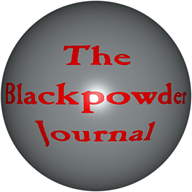Picking a Muzzleloading Rifle for Hunting
Eric Kindig
With the impressive number of black powder rifles to choose from, picking the right one for you might be a challenge. Here are some factors to consider:
- caliber: First check your state laws, many have established a minimum caliber.
- Fifty (.50) caliber is the most popular nation wide, and meets any state minimum we are aware of.
- Forty-five (.45) is the smallest caliber to be considered for most hunting situations, and will meet most state requirements.
- Fifty-four (.54) and fifty-eight (.58) caliber rifles are also available and are used to some extent. These larger calibers usually are not necessary unless they are going to be used for special hunting applications, such as large game.
- Rate of Twist: Today's black powder shooter has three
categories of rifles to choose from, based on the type of
rifling in the barrel. The rate of twist is designated by the
length of barrel necessary for the rifling (grooves in the
barrel) to make one complete revolution. For example, a 1-66"
twist rifling makes one complete turn in 66" of barrel, or less
than 1/2 turn in a 28" barrel.
- A 1-66" twist barrel is designed to shoot a round ball with a patch.
- A 1-48" twist is considered to be a "compromise barrel" because it will do a good job with either a round ball or a slug (i.e. a Maxi Ball, Maxi Hunter, Great Plains Bullet, saboted bullet or any other conical shape bullets), but is not ideal for either one.
- A 1-32" twist is a fast twist, and is deigned specifically to fire a slug.
The theory is that as the bullet gets longer, the rate of twist
NOTE: A round ball of .45 caliber or larger will take a white tail deer, and many target shooting events require only round ball be used because of the traditional or historical factor. Today, many hunters want to shoot a slug of some type because of the performance advantage. More on bullet types later.
- Ignition System
- The first of two ignition systems is the flint lock, in which a flint strikes a hardened steel frizzen, producing a spark which ignites a pan of powder which in turn ignites the main charge. These were in use from the 1600's to the early 1800's. Today flintlock rifles are popular with re-enactors, target shooters and hunters, especially those who hunt in Pennsylvania where only flintlocks may be used during their primitive weapons season. However, flintlocks constitute a small portion of the black powder gun market, and we will say more about them later.
- The second system is the percussion lock, in which a small metal cap with an explosive charge is set on a hollow tube, or nipple, and is detonated by the blow of a falling hammer. These were invented in the early 1800's and were widely used after the 1820's. Today percussion firearms come in two types, more or less traditional side lock models, and in-line styles. The in-line system fires when a spring-driven plunger traveling "in line" with the barrel hits the percussion cap. The plunger occupies the same position as the bolt of bolt-action cartridge rifles, and the in-line rifle resembles the cartridge rifle in feel as well. They feature a fast twist barrel, usually 1-32" or faster, to shoot a slug. Recent production in-lines are easily fitted with a scope.
- The type of sights a rifle is equipped with is often a factor in making the gun selection that is right for you. Most rifles from the mid to high price range will have a rear sight that is easily adjustable for windage and elevation. Many are pre-drilled and tapped to accept a variety of scope mounts. While a scope may detract from the primitive nature of a black powder rifle, it will often help those of us with vision problems to be more effective in the field.
The advantage of a traditional style over an in-line style, or vice versa, is open to debate. In-line guns are often represented as having faster ignition time and being less susceptible to misfire in bad weather. We feel the practical advantage of these factors are minimal. Both styles require detailed cleaning, maintenance and protection from bad weather to function dependably. Traditional side lock rifles may offer more historic or romantic appeal. They are available with all three rifling categories and in some cases a second barrel may be purchased with a different rate of twist to provide more versatility.
The final decision of ignition style should be based on the intended use and on the individual's judgment of such factors as weight, fit, feel, appearance, etc. In recent years, in-lines have been the most popular for those interested only in hunting, while conventional styles still appeal to hunters and those interested in competition and re-enacting.
